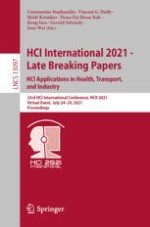This book constitutes late breaking papers from the 23rd International Conference on Human-Computer Interaction, HCII 2021, which was held in July 2021. The conference was planned to take place in Washington DC, USA but had to change to a virtual conference mode due to the COVID-19 pandemic.
A total of 5222 individuals from academia, research institutes, industry, and governmental agencies from 81 countries submitted contributions, and 1276 papers and 241 posters were included in the volumes of the proceedings that were published before the start of the conference. Additionally, 174 papers and 146 posters are included in the volumes of the proceedings published after the conference, as “Late Breaking Work” (papers and posters). The contributions thoroughly cover the entire field of HCI, addressing major advances in knowledge and effective use of computers in a variety of application areas.
